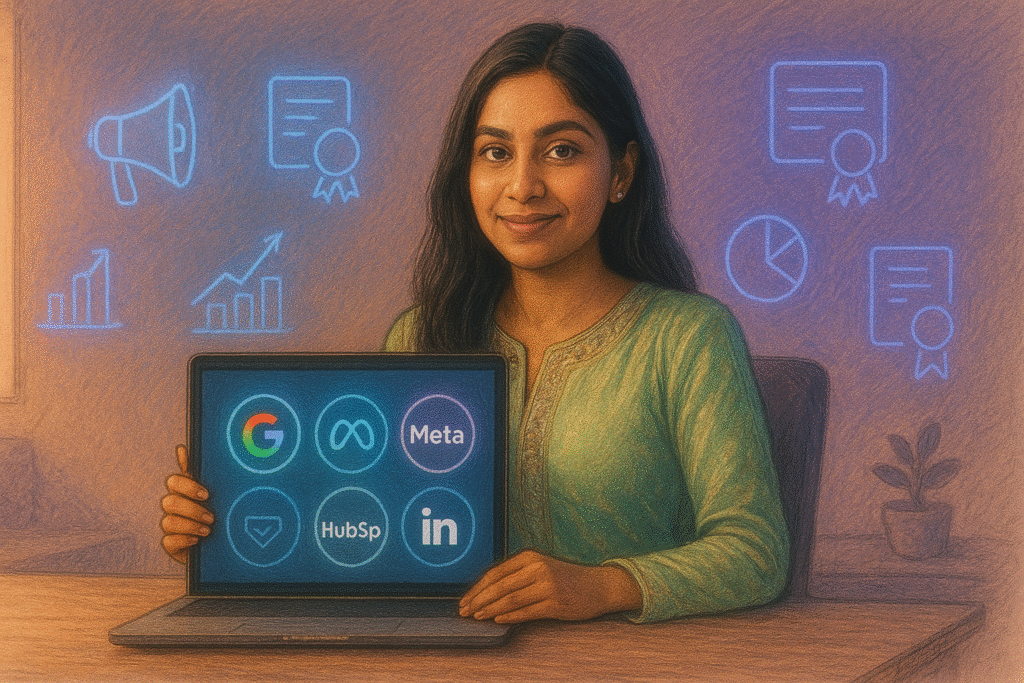Why Influencer Marketing in India Feels Different in 2025
Influencer marketing in India has always had its own flavor—just like our street food. In 2025, that flavor is sharper, more regional, and far less cookie-cutter than what we saw a couple of years back. Back then, most campaigns were urban-centric and dominated by Instagram stars in Mumbai and Bangalore. Today, you’ll see local heroes from Nagpur, Guwahati, and Jaipur holding their ground with micro and nano influencer power.
Case Study: The Rise of the Regional Star
I remember working on a campaign for a homegrown snack brand in late 2024. Instead of hiring a Bollywood celebrity, the brand partnered with food vloggers from Tier-2 cities who had less than 100k followers. And guess what? The ROI shot up by nearly 40%. Why? Because these influencers weren’t “aspirational” in the old sense—they were relatable. They posted videos of themselves dipping samosas into chutney, shot in their living rooms with neon tube lights buzzing in the background. That authenticity beat the glossy shoots hands down.
Trend #1: The Nano and Micro-Influencer Boom
We’ve all heard this before, but in 2025, it’s basically the main headline. Brands have realized that 10k engaged followers from Nagpur can drive more conversions than a celebrity with millions of passive fans.
Lesson Learned
I once thought bigger was always better in influencer campaigns. But after watching a small YouTube creator from Pune boost sales for an eco-friendly detergent, I had to eat my words. Engagement beats vanity metrics—every time.
Trend #2: Vernacular Content Isn’t Just an Option—It’s the Default
Does it surprise you that Hindi, Tamil, and Bengali influencers are overtaking English-language creators in engagement rates? In practice, that means reels with Punjabi slang or Marathi punchlines get double the traction compared to polished English reviews.
And brands are finally catching on. In fact, I’ve noticed startups in FinTech and EdTech running campaigns exclusively in regional languages, targeting WhatsApp groups and local Telegram channels rather than pan-India celebrity campaigns. Makes sense, doesn’t it?
Trend #3: Live Commerce – Shopping Meets Entertainment
Remember those TV home-shopping ads from the 2000s? Imagine that, but cooler, interactive, and happening on Instagram Live. Live commerce is exploding in India. Fashion brands, electronics retailers, even ayurvedic wellness startups are using influencers to host livestreams where viewers can directly shop products.
Example in Action
Nykaa recently experimented with influencer-led live shopping sessions. One popular beauty creator from Delhi casually tested lipsticks on live stream while answering viewer questions. The result? Products sold out within hours. That immediacy—watch, trust, buy—is a game-changer.
Trend #4: AI + Influencers = A Weird But Growing Combo
Here’s where it gets interesting. AI-generated influencers are starting to appear in India. A Bengaluru startup recently launched a “virtual fashion influencer” who has thousands of followers on Instagram. She doesn’t exist in real life, but she’s already bagging brand deals. Does that sound futuristic? Maybe. But it’s happening.
Of course, the debate is real: can a computer-generated personality really influence Indian audiences who value “relatability”? Personally, I’m skeptical. Would I trust a bot to tell me which filter coffee powder tastes better? Probably not. But for tech products or fashion brands, it might just work.
Culture Meets Commerce
Relatable. A Diwali campaign with creators doing family puja rituals before showcasing festive outfits? Authentic. And yes, even quirky cricket reels during IPL season are now a staple of influencer campaigns.
Local Flavor, National Impact
In 2025, influencers who can capture cultural nuances are far more impactful than generic global content. And this isn’t just theory—I’ve seen how one Navratri-themed campaign in Gujarat sold more ethnic wear in a week than a month-long nationwide ad campaign did last year.
Where Is It All Headed?
So, what does the future look like? My gut says influencer marketing in India will split into two strong streams:
- Hyper-local influencers dominating small but loyal circles, often in regional languages.
- Big-name cross-platform creators who act more like mini media houses than individuals.
And maybe, somewhere in between, we’ll see the rise of hybrid strategies where brands mix nano-influencers with celebrity names to balance trust and reach. Will it always work? Not always. But then again, nothing in marketing ever does—right?
Final Thoughts
Influencer marketing in India, especially in 2025, is like a crowded railway station. Everyone’s shouting, trying to be heard. But the ones who truly stand out aren’t the loudest—they’re the ones who feel familiar, local, and trustworthy. As a marketer, my biggest lesson has been this: don’t chase scale blindly; chase authenticity relentlessly.
And if you’re wondering whether this will change in 2026—well, let’s just say influencer marketing evolves almost as fast as meme culture. So don’t blink, or you might just miss the next big trend.

